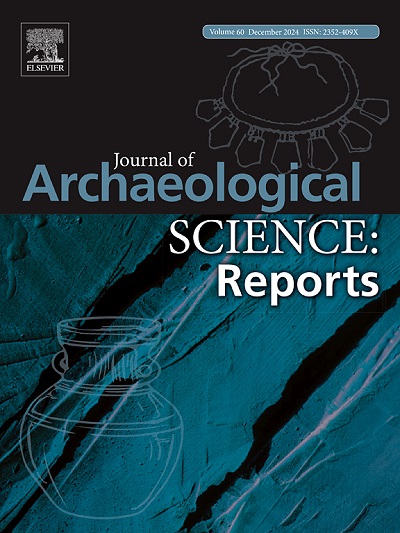青铜时代晚期塞浦路斯的殡葬实践:利马索尔两座坟墓的人口统计学和地药学见解
IF 1.5
2区 历史学
0 ARCHAEOLOGY
引用次数: 0
摘要
本文探讨了晚期青铜器时代(晚期塞浦路斯)的太平间实践,重点是在塞浦路斯利马索尔的两座坟墓中发现的人类骨骼遗骸的人口统计学和地语学分析。这些坟墓的特点是多个墓葬和各种各样的坟墓用品,表明死者的精英地位。结果支持包容性埋葬做法,即所有年龄组和两性共享埋葬空间。虽然是尝试性的,但这些结果似乎也支持了婴儿和幼儿最初被埋在墓室坟墓的不同部分,然后被重新安置在坟墓里。相比之下,年龄较大的儿童和青少年受到与成年人相同的待遇,有时被二次安置在坟墓里,而其他人则不受干扰。发掘日记中的信息显示,墓葬被反复使用,死者和生者之间的互动表现为将早期埋葬的尸体堆在一起,为新埋葬的尸体腾出空间,并以某种方式安排精选的头盖骨。然而,埋藏学研究并没有发现任何其他故意在死后操纵尸体的证据。此外,所有骨骼元素的良好表现,在很大程度上符合未受干扰的背景下的预期模式,支持了尸体和/或身体部位在最初埋葬后既没有从坟墓中移走,也没有最初存放在其他地方的尸体/身体部位被运送到这些坟墓中。人们观察到的墓室内尸体的二次处理揭示了生者和死者之间的复杂关系,促进了与祖先的联系,并可能突出了基于血统的集体身份。未来对墓葬物品和其他生物考古参数(饮食、机械和生理压力、生物亲缘关系)的研究,加上对每个坟墓不同地层的精确测年,应该会产生进一步的重要见解。本文章由计算机程序翻译,如有差异,请以英文原文为准。
Mortuary practices in Late Bronze Age Cyprus: Demographic and taphonomic insights from two tombs in Limassol
This paper explores mortuary practices of the Late Bronze Age (Late Cypriot), focusing on the demographic and taphonomic analysis of human skeletal remains discovered in two tombs in Limassol, Cyprus. These tombs featured multiple burials and a variety of grave goods that suggest an elite status for the deceased. The results supported inclusive burial practices, whereby all age groups and both sexes shared the burial space. Although tentative, these results also appear to support that infants and young children were initially buried in separate parts of the chamber tombs before being relocated within the tomb. In contrast, older children and adolescents received the same treatment as adults, sometimes being secondarily relocated inside the tombs and others left undisturbed. Information from the excavation diaries shows the repeated use of the tombs and the interaction between the deceased and the living in the form of piling the bodies from earlier interments to make room for new ones, as well as arranging selected crania in certain ways. However, the taphonomic study has not identified any other evidence of intentional post-mortem body manipulation. In addition, the good representation of all skeletal elements, which largely matches anticipated patterns from undisturbed contexts, supports that neither were bodies and/or body parts removed from the tomb after their initial burial, nor were bodies/body parts initially deposited elsewhere being transported into these tombs. The observed secondary treatment of the bodies inside the chamber tombs reveals a complex relationship between the living and the dead, fostering a connection with the ancestors and possibly highlighting a lineage-based collective identity. Future research of the grave goods and additional bioarchaeological parameters (diet, mechanical and physiological stress, biological kinship), coupled with a refined dating of the different strata of each tomb, should yield further important insights.
求助全文
通过发布文献求助,成功后即可免费获取论文全文。
去求助
来源期刊

Journal of Archaeological Science-Reports
ARCHAEOLOGY-
CiteScore
3.10
自引率
12.50%
发文量
405
期刊介绍:
Journal of Archaeological Science: Reports is aimed at archaeologists and scientists engaged with the application of scientific techniques and methodologies to all areas of archaeology. The journal focuses on the results of the application of scientific methods to archaeological problems and debates. It will provide a forum for reviews and scientific debate of issues in scientific archaeology and their impact in the wider subject. Journal of Archaeological Science: Reports will publish papers of excellent archaeological science, with regional or wider interest. This will include case studies, reviews and short papers where an established scientific technique sheds light on archaeological questions and debates.
 求助内容:
求助内容: 应助结果提醒方式:
应助结果提醒方式:


